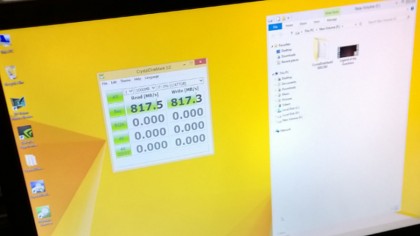The next generation of USB: Apple's MacBook is first, but it won't be alone
This isn't just about performance, but also versatility
Another advantage of USB type-C is two-way power, so that as well as charging your phone from your laptop – or powering a display – you can put up to 100W of power into a laptop or tablet. Even high-power notebook chargers only put out 90W and many deliver a lower wattage these days (tablets and netbooks need 18W, and many notebooks only require 36W or 60W), which means that you could power a laptop from an external battery bank or a solar panel (on a sunny day).
That's a bigger advantage for PC users, who will finally get a standard power connector instead of a different power tip for each notebook. China and the EU have already adopted microUSB as one of their standardised power connectors and they'll be adding type-C, Ravencraft believes.
Put it all together and we're expecting to see lots of USB type-C docking stations that let you power your notebook, connect external drives, drive a monitor and get a gigabit Ethernet port too.
Windows 10 will definitely support media-agnostic USB, as well as alternate mode USB and two-way power. So far, it looks as if Apple is only using alternate mode, and two-way power. It supports media-agnostic USB as well, and it would make sense to replace the Lightning connector on iPhones and iPads with USB type-C, but don't expect to hear about that until much later in the year.


Adapt and connect
If you pick up the new MacBook, be prepared to either buy a lot of new peripherals or to budget for buying adaptor cables for your external hard drives, your monitors, your Ethernet connection and even your USB sticks, because the only connector it has apart from the headphone socket is the USB port.
The transition will be easier for PC users – we saw several motherboards at CES 2015 with both USB 3.0 and USB type-C ports on board, and it's likely that only 7-inch and 8-inch tablets (and phones) will come with just USB type-C ports. The Nokia N1 tablet will have a USB type-C port – although interestingly it's only a USB 2.0 port so it doesn't get the high speed or the new multiple connections, and it's limited to 60W of power (which is enough to drive most docks).
SanDisk and LaCie have already announced USB type-C memory sticks and external hard drives, and with Windows 10 set to support the new connector there will be plenty of new peripherals and plenty of adaptors to take you from the full-size, mini and microUSB ports on your existing devices and peripherals to the new connector. As usual, USB 3.1 is backwardly-compatible with USB 2.0; you just need the cable.
Sign up to the TechRadar Pro newsletter to get all the top news, opinion, features and guidance your business needs to succeed!
So far Apple has power, USB 2.0, VGA and HDMI to USB type-C cables and adaptors, but the alternate mode in USB 3.1 that lets you connect non-USB devices to a USB type-C port means that we'll see more cables, including Ethernet, DisplayPort and today's USB ports. "You'll get type-C to A, type C to B, type C to micro A, to micro B, to DisplayPort," Ravencraft told us. "VESA already has the alternate mode spec for DisplayPort over USB and the MHL spec is coming too."
It's even possible to run the Thunderbolt protocol over USB 3.1, so USB type-C to Thunderbolt cables are a possibility.
Mary (Twitter, Google+, website) started her career at Future Publishing, saw the AOL meltdown first hand the first time around when she ran the AOL UK computing channel, and she's been a freelance tech writer for over a decade. She's used every version of Windows and Office released, and every smartphone too, but she's still looking for the perfect tablet. Yes, she really does have USB earrings.